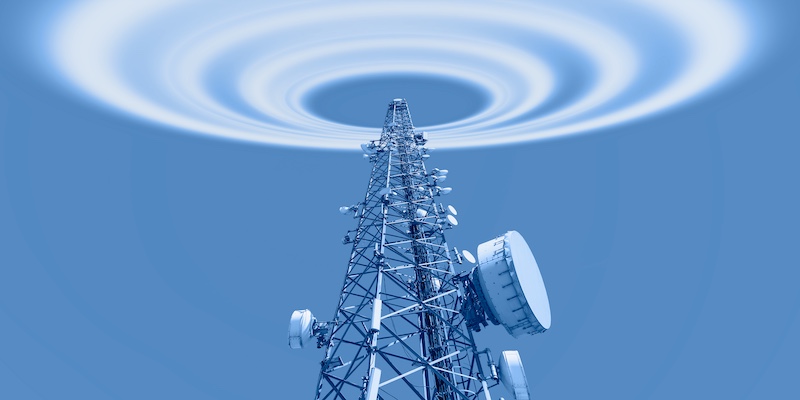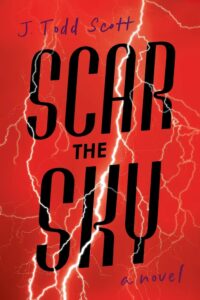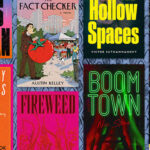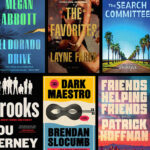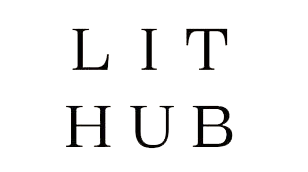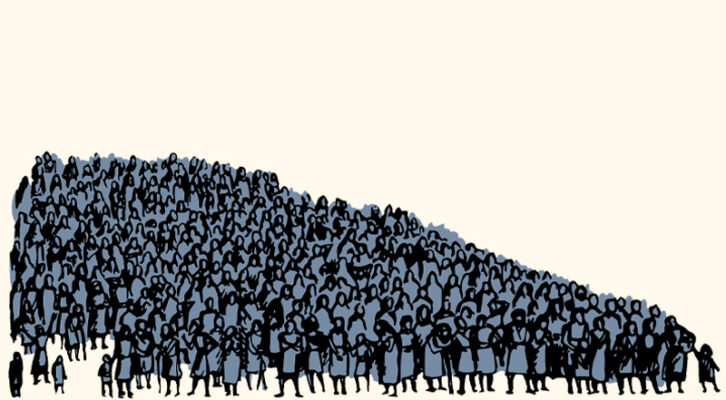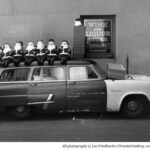In the Allegheny Mountains that cross West Virginia, there is a tiny community where cellphones and Wi-Fi are outlawed.
Green Bank is the heart of an electromagnetic black hole, a 13000 mile federally designated radio-transmission-free “quiet zone”, created in 1958 to protect the sensitive astronomical equipment housed at the Robert C. Byrd Green Bank Radio Telescope, the largest radio telescope in the world. The telescope was designed to unravel the mysteries of the universe, but one of the most enduring mysteries in Green Bank is far more terrestrial in origin, the little-known medical phenomenon of electrosensitivity or electrohypersensitivity (EHS), which has drawn suffering individuals from all over the country to these remote, rural mountains.
It can be hard enough to cope with the always-on, always-connected, omnipresent clamor of modern life, but only more so when those conveniences that connect us (and that most take for granted) are poisonous or toxic. EHS sufferers physically feel the radio emissions from TVs, cellphones, and Wi-Fi in the air around them, reporting a variety of debilitating conditions and side effects, including blurred vision, nausea, and headaches. Nevertheless, the worldwide medical community remains dubious; there’s little consensus on what exactly EHS is, how best to define it, or if it is a true sickness at all.
Like fibromyalgia, chronic fatigue syndrome (CFS), long COVID and other chronic disorders, there is no single definitive test, no easy diagnosis for EHS; there is no pill to prescribe, regimen to undergo, or surgery to remediate the symptoms. EHS presents as a panoply of effects ranging in diversity, severity and subtly, varying from person to person, therefore making it a uniquely personal condition. And as with other evasive afflictions, there remain healthy EHS skeptics both within the medical establishment and outside it, who continue to suggest it is a malady of the mind. Nevertheless, those who struggle with EHS make the compelling case that their symptoms leave their modern lives far too difficult to navigate, an impossible burden to bear, to simply write them off as hypochondriacs.
I discovered Green Bank while writing Call the Dark, my 2023 novel about a woman trying to elude dangerous pursuers in the West Virginia wilds. While originally drawn to the idea of a remote area with little cell tower coverage (cellphones are the bane of mystery and suspense writers of everywhere), I found the story of the small EHS fraternity there fascinating; not only due to their ongoing struggle for wider medical acceptance, but their equally fraught struggle to be accepted by (and assimilated in) an already existing rural community eager to modernize. Although the seemingly baroque rules of the National Radio Quiet Zone (NRQZ) have created a uniquely perfect haven for those with EHS—a clearly unintended side effect—not everyone in Green Bank suffers from the condition, and those who don’t have increasingly welcomed the surreptitious prevalence and encroaching modernity of cellphones and Wi-Fi, microwaves and smart TVs, even if that means violating or flaunting the strict letter of the law of the NRQZ. While once called one of the “quietest” places on Earth, this is not strictly true anymore. But most in Green Bank feel these are minor transgression, no worse than speeding on an empty highway. To those who have migrated there seeking refuge from their EHS, those offenses feel potentially fatal.
Years earlier I had also read about Snowflake, Arizona, a community not unlike Green Bank, where a small handful of people had retreated to manage an even broader range of environmental illnesses, including Multiple Chemical Toxicities (MCT) and toxic encephalopathy. Not merely susceptible to electromagnetic toxicity, Snowflake’s denizens suffer from allergies to pollution, to the synthetic solvents and chemicals found in most clothes and household items, to the fragrances and odors in common, everyday products; in effect, the world itself is trying to kill them.
While my upcoming novel Scar the Sky does not directly deal with either EHS or environmental illnesses, my secretive community of lightning strike survivors all suffering from post-traumatic stress and a litany of lingering side effects they cannot explain is a nod to this phenomenon. Similarly, my fictional New Cornelia, Arizona, is a thinly veiled amalgam of both Green Bank and Snowflake. But loose affiliations of real lightning strike survivors do exist, with Lightning Strike and Electrical Shock Survivors International (LS&ESS) being one of the most well-known. With a dedicated website and a yearly conference to advocate for lightning strike survivors, they have banded together specifically (per their site) to promote medical research to benefit and better understand survivors and their medical problems.
When lightning strikes a person, more than 300m volts of electricity burn through the body in three milliseconds, disrupting every electrical system. For a heartbeat, a lightning bolt is hotter than the sun. And while cardiac arrest is a common cause of death, cognitive impairment and brain injury is also a frequent side effect for those who survive. Many survivors also briefly display the mysterious but beautiful burn scars known as Lichtenberg figures, fractal patterns eerily reminiscent of the lightning bolt itself.
Like those suffering from EHS and environmental illnesses, lightning strike survivors can struggle for decades with a range of elusive, crippling symptoms they cannot readily explain but all attribute to the bolt from the heavens. In Scar the Sky, I envision a world where such survivors exhibit preternatural side effects as well; their ailments truly in “their head,” because their high-voltage trauma has figuratively and literally rewired their brains.
In wrapping this core idea within a murder mystery—the cross-country rampage of a unique serial killer—the heart of the book is an examination of faith and belief. How does someone who suffers from a condition the many people do not believe in convince others that they are truly in danger? What is it like for the world to think you are crying wolf all the time, when a real wolf appears at the door? And just how much more dangerous is it when your disorder forces you to lock yourself away with little resources or support?
There are no easy answers to these questions in the context of the book or for those who struggle with EHS or other environmental illnesses out in the real world. While allergies to food are easy to understand, allergies to electromagnetic fields and chemicals remain far harder to grasp, but no less real to those who suffer. And unfortunately, there are likely only to be more individuals burdened with these invisible, mysterious afflictions, in our increasingly complex, modern, interconnected biosphere.
***

